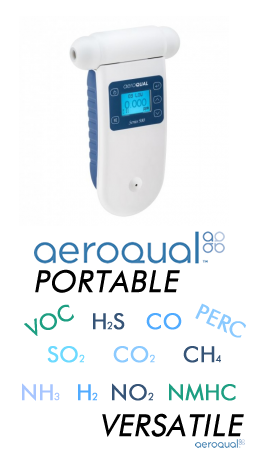Mercury SafeAir Badge (382005-50)
SafeAir chemical detection badges are a visual indication badge that alerts you with a color changing exclamation mark when there is a specific chemical hazard.
Quantity = 50 badges *clips are NOT included*
Note: we are not able to ship these badges outside of the US
Color change for Mercury is from white to purple.
The SafeAir Mercury Dual Level badge may be used for personal or area monitoring for exposure time from 15 minutes to 48 hours.
Introduction
Mercury is a silver-white, heavy, mobile, liquid metal with no specific odor. It is readily absorbed through the skin, the gastrointestinal tract and the respiratory tract. Chronic exposure may cause inflammation of the mouth and gums, kidney damage, muscle tremors, depression, and nervousness. Mercury spills and heated mercury are particularly hazardous. OSHA and NIOSH exposure limit for mercury is 0.1 mg/m3 (ceiling).
Mercury is used in barometers, thermometers, hydrometers, pyrometers, and in mercury arc lamps producing ultraviolet rays. It is also used in pharmaceuticals, agricultural chemicals, and antifouling paints
Principle of Operation
The SafeAir mercury badge is a monitoring system designed to indicate the presence of mercury at concentrations below the permissible exposure limit. The SafeAir mercury badge detects the presence of mercury by forming a color change in the shape of an exclamation mark inside the triangle. This indication is produced by a color-forming reaction which occurs when mercury reacts with a flat indicator layer

Operating Instructions
1. Remove the pouch from the refrigerator and allow it to warm to room temperature.
2. Remove the badge from its protective pouch.
3. For personnel monitoring, attach the badge near the user’s breathing zone (i.e. the collar) with the front side exposed to the surrounding atmosphere.
4. For area monitoring, attach the badge to a stand and mount in a centralized area with the front side exposed to the surrounding atmosphere.
5. The exclamation mark appears within the triangle when mercury is present. Please note that an exclamation mark may appear on either the back or the front and the back of the badge.
6. To obtain the average concentration, divide the exposure dose (mg/m3 ∙hr) by the exposure time in hours (hr).
Storage
The ChromAir mercury monitor should be refrigerated in its sealed bag at all times.
Sampling Parameters
| Front |
Back |
|||||||
|
Color Change |
white to purple |
|||||||
|
Exposure level |
0.25 mg/m3 ∙ hr |
0.08 mg/m3 ∙ hr | ||||||
|
Minimum detectable limit (8 hours) |
0.031 mg/m3 |
0.01 mg/m3 |
||||||
|
Maximum recommended sampling time |
48 hours |
|||||||
|
Minimum recommended sampling time |
15 minutes |
|||||||
|
Relative humidity range |
10% - 86% |
|||||||
|
Face velocity range |
10 - 150 cm/sec |
|||||||
|
Temperature range |
50ºF - 104ºF |
|||||||
|
Light effect - UV (direct sunlight) |
no effect |
|||||||
|
Light effect - visible |
no effect |
|||||||
|
Color stability |
2 days |
|||||||
|
Refrigerated shelf life |
1 year |
|||||||
Downloads
| Manufacturer | Morphix |
|---|---|
| Call For Price | No |
| Gas | Mercury |
| Operational Temperature Range | 50°F - 104°F |
| Operational RH Range | 10% - 86% |
| Maximum Exposure | 0.25 mg/m3-hr |
| Audible Alarm | No |
| Calibration | N/A |
| Sensor Life | 48 Hours |
| Range | 0.031-0.25 mg/m3-hr |
| Sensor Range | 0.031-0.25 mg/m3-hr |



















